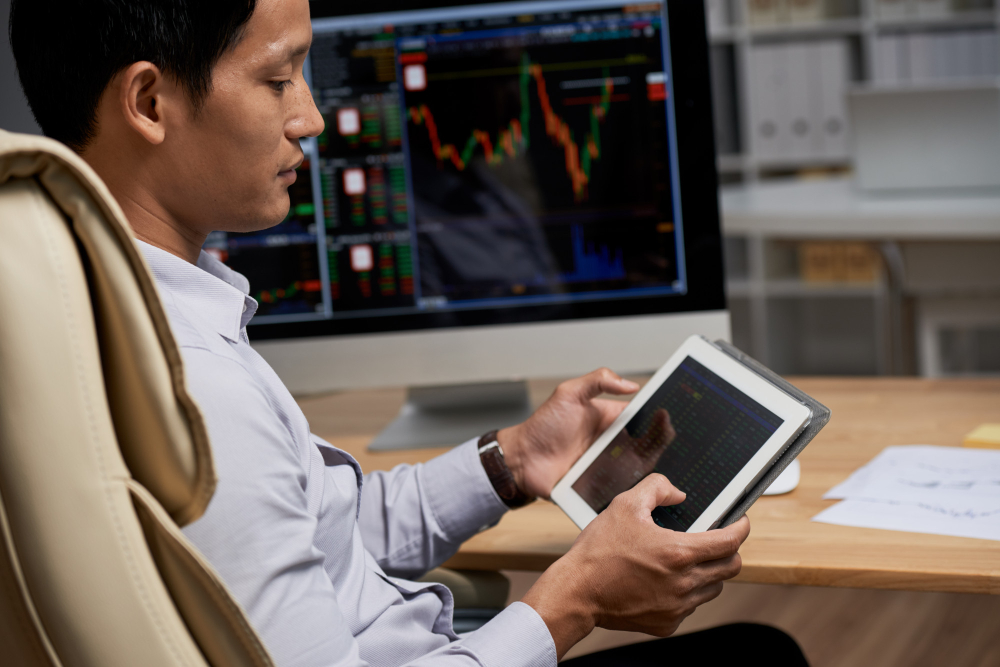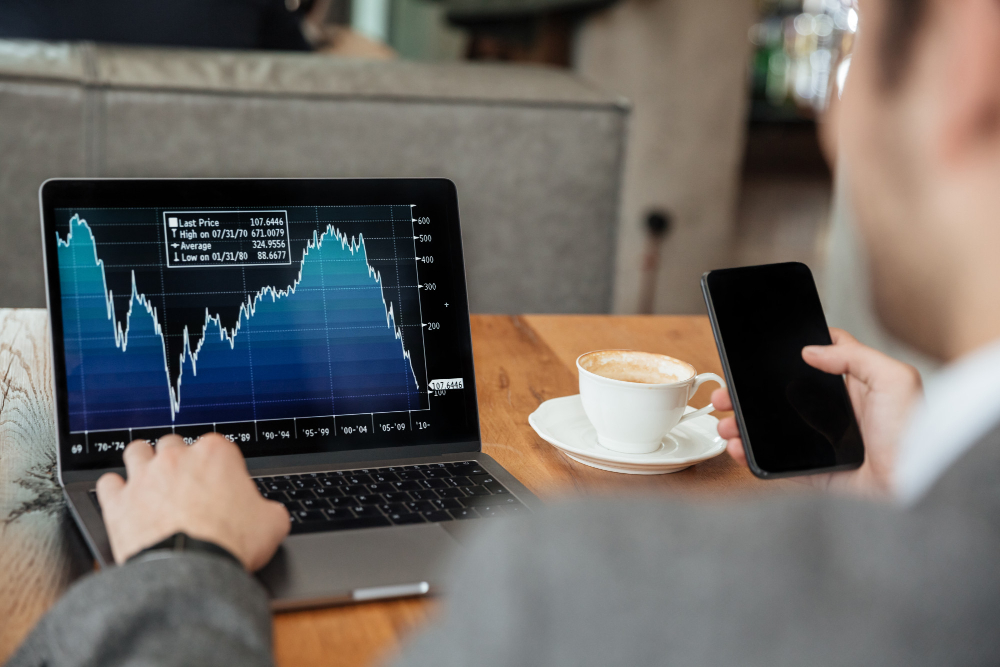Trading in financial markets demands mental strength. Here, the mind is the linchpin between triumph and defeat.
In fact, 29% of traders and investors revealed that they go with their gut in decision-making, which is a sure sign of overconfidence. The results? Deciding based on emotions leads to trading losses.
What’s more, the Traders Union corroborated what traders experience in a fast-paced market movement. Traders admitted to deviating from their trading strategy due to emotional factors, such as impatience or the fear of missing out (FOMO).
Do you also feel this way at some point in your trading?
Whether you’re a beginner learning algorithmic trading or a seasoned trader relying on automated trading system, you’ll learn how to build a robust trading system powered by a calm, peaceful mind while consistently increasing your gains.
Why should you have a robust trading system?
A sturdy trading system is the bedrock of consistent success in trading and investments. It withstands diverse markets, offering profitable signals and trading opportunities across assets and timeframes.
Here’s why it’s a game-changer:
- Market consistency. From stocks to forex, a robust automated trading system delivers in any market, improving overall performance with its versatility.
- Adaptability. Dynamic markets are no match. Whether high volatility or regulatory shifts, a robust trading system adjusts seamlessly, ensuring effectiveness through every market twist.
- Avoiding pitfalls. Robust systems shine brightly in live trading scenarios by sidestepping overfitting pitfalls, such as being triggered by waves of emotions in volatile markets.
A word of caution here, though.
A robust trading system is only useful with the right mindset. It’s like having a high-performance sports car; without a skilled driver, it’s just an expensive piece of machinery.
But it’s no secret that automated trading systems rule the U.S. stock market, commanding 70-80% of all exchange transactions. This indicates the widespread trust that traders place in automated systems to navigate their trades effortlessly.
Considering a mechanical trading system that has generated six figures of profits in 8.2 years? Unlock your 21-day free trial of the Systemized Investing Program and see it in action.
Now let’s move on to the meatiest part of the article.
How to build a trading system for market success?
1. Set up risk management protocols
Establishing solid risk management practices forms the bedrock of a thriving trading system. Effective strategies empower traders to navigate potential losses, ensuring sustainability and profitability in stock exchanges and international markets.
Here’s what to focus on:
Always set the stop-loss order
Place stop-loss orders at a level that aligns with your risk tolerance. For instance, if you are willing to risk 2% of your trading capital on a single trade, set the stop-loss accordingly as part of your trading rules.
Stop-loss orders help maintain discipline by automating the exit process, thus removing emotional decision-making from the equation.
Defining risk tolerance levels
Determine your risk tolerance by considering your financial goals, investment horizon, and psychological comfort with potential losses.
Use this assessment to limit how much of your capital you will risk on each trade and overall trading positions. This could involve setting a maximum percentage of your portfolio to be exposed to risk at any time.
Diversify positions
Spread your investments across different asset classes, sectors, and instruments to reduce exposure to any single risk in your trading platform. Diversification helps in mitigating unsystematic risk, which is specific to your investments.
Regularly review and rebalance your portfolio to maintain the desired level of diversification. This ensures that every position becomes manageable and jeopardises your overall portfolio.
2. Master trade execution tactics
In trading, precise and timely trade execution is vital for seizing market opportunities. How you execute trades can heavily influence your strategy’s profitability.
Here’s what to focus on:
Execute trades with precision and timeliness
In trading, a limit order directs buying or selling a security at a set price or better, guaranteeing execution at preferred terms.
Opt for limit orders with precise price goals, especially in volatile markets prone to swift price changes. They grant control over execution prices, shielding against adverse movements and slippage.
In trading, opt for market orders when speed matters more than price precision. They are ideal for swift executions in highly liquid markets or reacting to news. Market orders ensure rapid execution, which is advantageous in dynamic markets.
Make trading as efficient as possible
You must also include trailing stops to adjust stop prices based on a fixed percentage below (sell orders) or above (buy orders) the market price, moving in one direction with market shifts.
Use trailing stops to secure profits as the market moves favourably. For instance, setting a predefined level below the market price adjusts the stop price upward with market rises but doesn’t decrease with market falls. This tactic safeguards gains while capitalising on market upswings, systemises stop adjustments, and reduces monitoring needs.
3. Make market analysis a habit
Market analysis is pivotal for trading success. It involves a systematic study of factors shaping market movements. Regular analysis empowers market participants to anticipate trends, spot opportunities, and make informed decisions, staying ahead of market shifts.
Here are some of the key market trends and analysis to spot on:
Identify trends and patterns
- Trend analysis. Reviewing historical data reveals bullish, bearish, or sideways trends, guiding strategic trade entries and exits.
- Pattern recognition. Chart patterns like head and shoulders signal potential price movements, offering insights into market sentiment and reversals.
Maximise technical analysis tools
- Price charts. Essential for visualising price movements, line, bar, and candlestick charts aid in trend and pattern identification.
- Technical indicators. Moving averages, RSI, and MACD gauge trend strength and direction, assisting in spotting entry and exit points.
- Volume analysis. Examining trading volumes alongside prices confirms market sentiment and trend sustainability.
Incorporating fundamental analysis
- Economic indicators. Evaluating GDP growth, employment, and inflation rates helps predict market behaviour amid economic shifts.
- Company financials. Analysing financial statements offers insights into a company’s health and future prospects, which is crucial for investment decisions.
- Industry trends. Understanding sector-specific dynamics by staying updated with news trading aids in evaluating stock performance within a sector, considering market share, regulations, and technological advancements.
Continually conducting analysis like this manually is massively time-consuming and prone to errors due to emotional opinions and ego-overriding objectivity.
4. Get a trading coach or a trading mentor
When building a trading system for market success, consider the significance of having a trading coach or mentor to enhance accountability in your trades.
Having a mentor or coach provides guidance, feedback, and accountability in your trading journey. They offer insights, expertise, and perspective to help you navigate market complexities and improve decision-making.
Look for someone with substantial experience, a proven track record of success, and a compatible trading style. Seek a mentor who can provide constructive criticism, support your growth, and challenge you to reach new heights in trading proficiency.
Imagine a seasoned trader as a skilled captain guiding a ship through treacherous waters. A mentor acts as the lighthouse, offering direction, caution, and wisdom to help the captain navigate safely and reach the desired destination.
Just as the lighthouse aids navigation in challenging seas, a mentor illuminates the path to trading success, ensuring you stay on course and avoid potential pitfalls.
5. Recalibrate your thinking and mindset
Recalibrating your thinking and mindset emerges as a pivotal step in the journey to construct a winning trading system.
Trading is not just about numbers—it’s a mental strength game. A resilient mindset is essential to navigate the emotional roller coaster of trading, transforming fear and doubt into strategic calmness and clarity.
By embracing this shift in mindset, traders can enhance their decision-making, risk management, and overall approach to trading challenges.
Process and mindset emphasise the fusion of structured methodologies with emotional resilience. This combination is crucial for developing the mental fortitude needed to withstand market volatility, make sound decisions under pressure, and maintain consistency in trading performance.
Emotional resilience protects against impulsive actions, anchoring traders in a disciplined approach towards trading success.
Imagine trading as a demanding sport like tennis, where mental composure is vital to physical skill.
Just as a championship tennis player relies on mental toughness to stay focused amidst intense competition, traders require a solid mindset to weather market storms. By recalibrating your thinking and embracing a disciplined mindset, you equip yourself with the mental agility needed to navigate market challenges smoothly, make informed decisions, and emerge as a consistent performer in the trading arena.
Leveraging technology and tools for trading success
To achieve trading success, a robust system is key. These five points underscore the importance of transforming your mindset alongside honing your trading skills.
Incorporating these principles sets the stage for consistent profitability and growth. The Systemized Investing Program by Share Wealth Systems offers a transformative online learning experience, focusing on mindset mastery, risk management, and utilising tools like SPA3 Investor for successful trading.
Begin the journey towards disciplined, confident trading with Share Wealth Systems. Improve your decision-making skills and embrace a winning and peaceful mindset.
Seize this opportunity to excel in all market conditions and redefine your trading journey—from being overwhelmed, you become resilient and calm amidst the highs and lows of the market.



